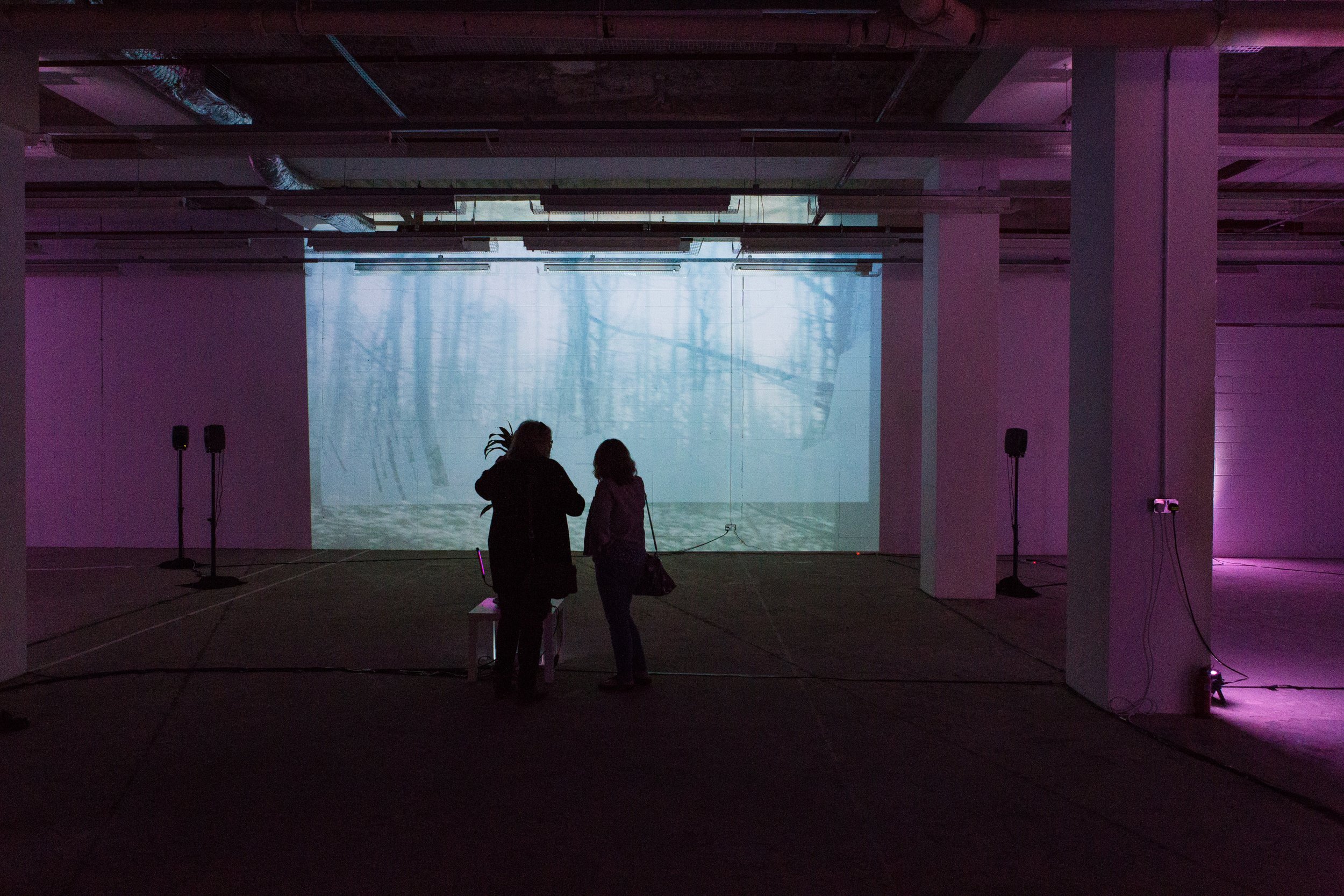(UN)Heard
( U n ) H e a r d
3 x 4 Ambisonic Worlds
Interactive Plant + Light + Audio Visual Installation
SHIFT, Cardiff (2019)
Programme Notes
By Teddy Hunter
Words by Rosey Brown
How can we hear something that cannot be heard?
How can we translate something that does not talk?
‘The lichens are strangely connected beings: algae intimately interrelated with fungi. A still stranger connection: algae, fungi, humans.’ (Arne Næss, The Ecology of Wisdom)
We know that complex root systems connect plants and trees, but what is less understood is how these interconnections facilitate plant-to-plant communication. Whilst we may not be able to hear plants ‘talking’ to each other, we can nevertheless sonify biodata, using the concept of ‘plant language’ as a challenge to translate a language that cannot be heard into a sound that we can interpret.
The installation consists of three ambisonic ‘worlds’ - each consisting of a set of four loudspeakers - installed in close proximity to each other. Ambisonics allows us to hear sound more holistically - it’s a multi-directional recording and playback process. From a distance the sounds merge, but as we move closer to each world we begin to hear that amongst the sonic overlaps and collisions, certain characteristics emerge, allowing us to drift from one listening environment to another. In a sense, each world - based on the language of a particular plant - provides the listener with a different way of translating plant messages, allowing us to ‘eavesdrop’ on a plant conversation.
In the centre of the installation, a device called the MIDI Sprout is used to gather live biodata from the plant. The MIDI Sprout then translates the voltages that the plant emits into data that we can further transform and render into a series of sounds and messages. Part of what we hear results from a collaboration with writer, Rosey Brown, who uses recorded words to think about how plants might communicate. Is it a conversation, a warning or more like eavesdropping? Unlike human speech, which must be linear, changes in roots and chemical signals mean that plants could be expressing several concepts or concerns at once. The words seem random at first - layered over one another and spoken at the same time, but by interacting with the central plant we find that it responds by forming nonsensical sentences that are spatially placed around the room. Real-time visual editing simultaneously generates a visible representation of the biodata. In addition, warped field recordings are used to give an impression of ‘plant time’ in the installation. Whilst it may be hard to describe how it is that plants communicate with each other, and what plant time might be like, we can at least imagine that things are very different from a non-human perspective.
By creating three ambisonic worlds of real-time sounds and recordings, that allow us to eavesdrop and immerse ourselves in a different language, and a different flow of time, our aim is to open up new sonic perspectives on the lifeworld of plants.





